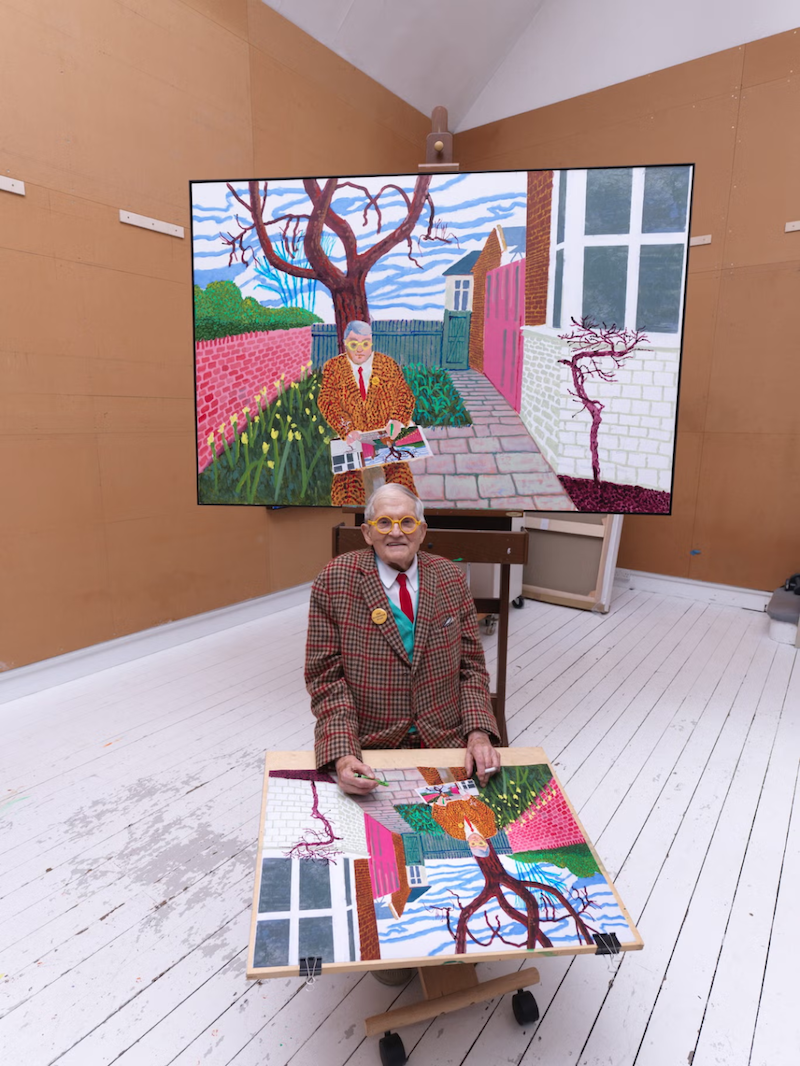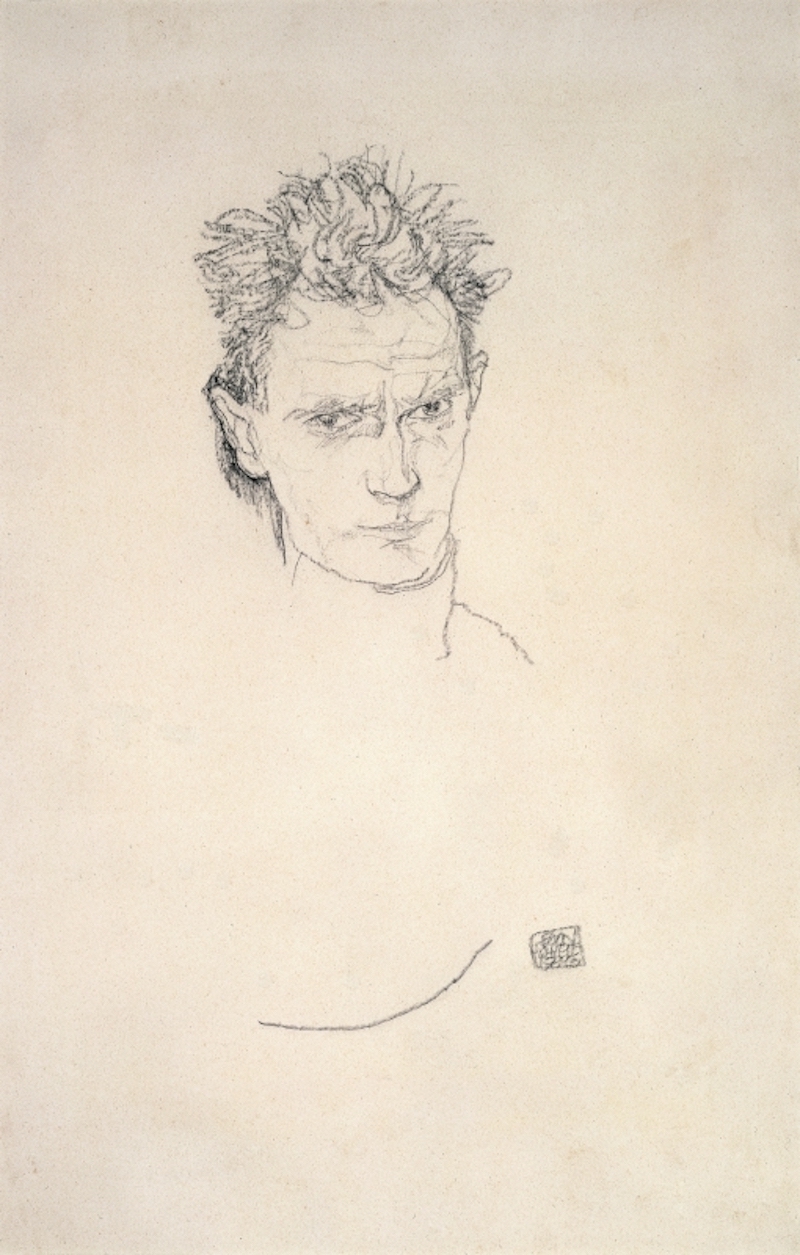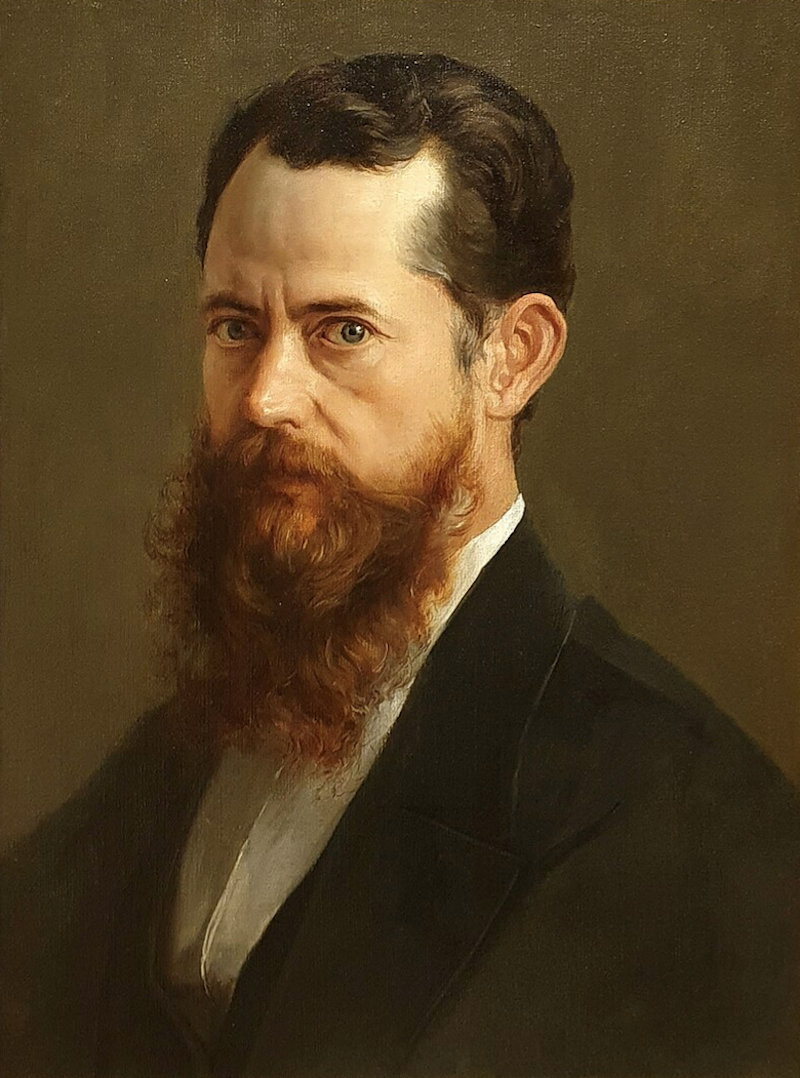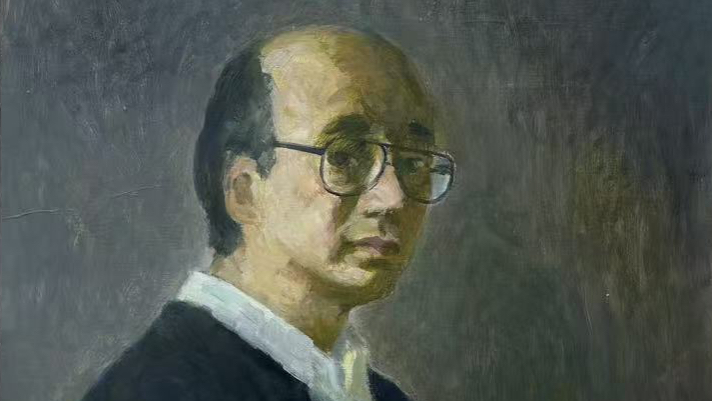
David Hockney, 87, is the most famous British artist today. He has been receiving treatment for his illness recently, but he is determined to go to Paris to attend the most important retrospective of his life. "Even last year, I thought I would not be here. But I still came!"
The Paper reported that on April 9, the exhibition "David Hockney 25" was held at the Louis Vuitton Foundation in Paris. The exhibition features more than 400 works in various media, including oil paintings, acrylics, pencil drawings, charcoal drawings, digital art, etc., showing his creative process over the past 70 years. Hockney said, "This exhibition is of great significance because it is the largest exhibition I have ever held. I hope that visitors will take away only one thing from the retrospective: happiness, some real happiness!"
Previously, his solo exhibition poster was removed from a Paris subway station - it was said that this was because the poster of the exhibition, which will open on April 9, showed him holding a cigarette. However, this was just a "small episode" in the entire exhibition.
Looking back two years ago, when the Louis Vuitton Foundation in Paris approached David Hockney about organizing a grand retrospective of his works, he thought he would not be able to see the opening of the exhibition.

David Hockney
A few weeks before the opening of the exhibition in Paris, titled David Hockney 25, Hockney was in his London studio, wearing a mint green cardigan, canary yellow glasses and a matching tie. A nurse in a blue scrubs appeared beside him, keeping a close eye on him as he lit a cigarette. He was wearing a button he made after the British government banned smoking in public places in 2007.
Hockney now has 24-hour medical care, and ensuring he can travel to Paris for the exhibition opening is his team's top priority. Hockney said he plans to take his dachshund Tess with him by car, while his doctor will go alone. "I'm looking forward to it because it's the biggest exhibition I've ever been involved in. It should be like this."

Hockney at his home in Los Angeles, California, 1987
In his 70-year artistic career, Hockney has created portraits, landscapes and still lifes, as well as multimedia installations, using acrylic, pencil, charcoal, Polaroid camera, video and iPad. The exhibition "David Hockney 25" will open at the Louis Vuitton Foundation on April 9, presenting more than 400 works on loan from more than 40 institutions and private collections. Exhibition curator Norman Rosenthal said that although these works will fill all the exhibition halls of the art museum, "we can actually double the size of the exhibition and still use different works."
Norman Rosenthal first met Hockney in 1971, when he was already a darling of the London art world, with bleached blond hair, fashionable friends and dazzling portraits. But Rosenthal said he "really discovered" Hockney as an artist only while curating this exhibition. "His work is 'bottomless,'" Rosenthal said. "He is the artist I would most like to compare him to, along with Picasso."

David Hockney, Portrait of My Father, 1955
Rosenthal said that like Picasso, Hockney has become one of the most celebrated artists of his time by always following his own rules. Picasso's late works were often dismissed both during his lifetime and after his death. Some of Hockney's iPad works have also received mixed reviews in recent years. "There are people in the art world who think he's not very good and are skeptical about his popularity. It's just like Picasso. But time will tell."
Hockney said he hopes visitors take away only one thing from the retrospective: "Happiness, some real happiness!" To that end, visitors to the Louis Vuitton Foundation, designed by renowned architect Frank Gehry, will see pink neon handwriting snaking up from the entrance. It's Hockney's own handwriting, and it reads: "Remember, they can't cancel spring."
Suzanne Pagé, artistic director of the Fondation Louis Vuitton, said Hockney could be paradoxical. He was a "great thinker" who proposed new theories about the history of art, she said, "and yet when he saw spring, it was like a child discovering spring for the first time."

David Hockney, A Bigger Splash, 1967
Unlike previous exhibitions at London's Tate Britain, New York's Metropolitan Museum of Art and Paris's Centre Pompidou in 2017, Hockney was closely involved in every stage of the planning of this retrospective. Pug said Hockney was meticulous in selecting the bright blue, red and yellow pigments on the walls of the exhibition halls, and he also carefully edited the accompanying paper brochure for the exhibition. To work on the exhibition with curator Rosenthal, Hockney used dozens of three-dimensional models of museum spaces. "This exhibition is very significant because it is the largest exhibition I have ever held, with 11 exhibition halls. It also includes the recent work I am working on now, which is very exciting."

David Hockney, Portrait of an Artist (Two Figures in a Pool), 1972
The first two galleries of the exhibition display Hockney's most outstanding works in the 20th century, including his first sold painting "Portrait of My Father" (1955), "Mr. and Mrs. Clark and Percy" (1970-1979) and "My Father" (1979-1979). Among them, "Clark and Percy" is a double portrait he created for designers Ossie Clark and Celia Birtwell. In addition, there are typical California-style swimming pool paintings "A Bigger Splash" (1967) and "Portrait of an Artist (Two Figures in a Pool)" (1972), as well as his nearly 25-foot-wide American landscape painting "A Bigger Grand Canyon" (1998).

David Hockney, Room at Tarzana, 1967
“From the beginning, Hockney was brave and rebellious,” Pugh said. These early rooms also include paintings with explicit references to homosexuality, including works he made at art school in the early 1960s, when homosexual acts between men were still illegal in Britain. In the exhibition, A Bigger Splash is juxtaposed with Room at Tarzana (1967), which depicts Hockney’s then-partner, Peter Schlesinger, lying facedown on a bed, naked from the waist down.
According to Hockney’s longtime assistant Jonathan Wilkinson, this will be the first time all of these early works, most of which were created in London and Los Angeles, have been shown in the same space. However, as the exhibition title suggests, the bulk of the works on display are from the past 25 years, many of which were created when Hockney escaped city life for less crowded places such as Yorkshire, England, and Normandy, France.

David Hockney, The Greater Grand Canyon, 1998
Hockney grew up in Bradford, Yorkshire, in northern England. After art school in London, he travelled widely, living in Los Angeles for more than three decades. In the 1990s, he returned to Yorkshire often, and in the mid-2000s he moved into a house in the Yorkshire seaside town of Bridlington. But Hockney doesn’t paint the sea. Christopher Simon Sykes, Hockney’s biographer, who also grew up in Yorkshire, says the rolling hills of Yorkshire are “the last great unspoiled region of England”. The great English landscape artists of the 19th century returned again and again to certain landscapes of their homeland, such as John Constable’s Suffolk and JMW Turner’s Thames. But no great artist has ever been so drawn to the Yorkshire Wolds, with its fields crisscrossing and its rolling hills beneath a vast sky.

David Hockney, Trees near Walter, 2007
Hockney spent a decade painting on site in the area, transforming the landscape into playful, colourful, perspective-bending paintings. "He became a well-known figure in the area," says Simon Sykes. "People were used to seeing this guy sitting out in the wilderness with his easel and a few canvases on other easels, painting away." The exhibition includes Hockney's depictions of springtime amid hawthorn bushes, including Mayflowers on the Roman Road (2009), and his observations of the changing seasons, such as the huge winter landscape Big Trees Near Walter (2007).

David Hockney, 27 March 2020, iPad drawing printed on paper
Hockney began using Polaroid cameras, fax machines and photocopiers in the 1980s. In 2010, he began painting rural Yorkshire landscapes on an iPad, which allowed him to create much faster than with paint. He also installed multiple cameras in his car to shoot videos.
In Room 4, there are about 60 portraits, including paintings of friends and family members that Hockney painted with acrylic paint and iPad, as well as some self-portraits. These works were created on a digital tablet but displayed in traditional frames. In Rooms 5 to 7, his landscape paintings are displayed, including the "220 for 2020 series" completed entirely on iPad, capturing the changes in light day by day and season by season.

David Hockney, Mayflower on the Roman Road, 2009
Hockney’s love of innovative technology spills over into his other passions. In a cavernous room that Pugh calls a “cathedral of music,” some of Hockney’s sets and costumes for opera have been transformed into an immersive, child-friendly installation. In another room, 18 mirrored screens will show dancers performing in Hockney’s studio. Visitors are encouraged to join in the choreography, which was choreographed by Wayne Sleep.
Before the opening, staff were installing Hockney's recent portraits in a newly painted gallery. He has always painted what he sees around him, saying, "observation is my greatest joy in life." This includes capturing the people around him again and again.

David Hockney, Christopher Ashwood and Don Bachardy, 1968
Textile designer Birtwell, who is featured in Mr and Mrs Clarke and Percy, has been Hockney’s friend for six decades. Her most recent portrait, from 2023, hangs on a blue wall alongside portraits of his partner Jean-Pierre Gonçalves de Lima, Frank Gehry, Harry Styles and two of his nurses. “His work is his diary,” she says.
Birtwell said she had been painted dozens of times by the artist and that sitting before Hockney was "very intense". "With no music or other distractions, it was just him and his facial expressions. But he really saw the spark in me in a very different way than anyone else over the decades."

Hockney, Clarke and Percy
If there is a tension in Hockney’s work over the decades, it is “his ability to socialize and his desire to be in his studio all the time,” said Martin Gayford, a critic who has co-authored several books with him. Lately, Hockney’s hearing has deteriorated, making it difficult for him to be in loud spaces, and he rarely goes out.
So when Hockney moved to the Normandy countryside in 2019, the secluded life attracted Hockney. Assistant Wilkinson said that when the epidemic came, he and his team lived and worked in a more isolated environment than expected, but completed a lot of work. Wilkinson said, "Hockney is always working. So to join his team, you have to be really committed." It is said that his employees do not necessarily rest on weekends or holidays, and their discussions on work often continue into the evening.

David Hockney, After Blake, 2024
Hockney, with the help of assistants, has created three new works to close the exhibition: a self-portrait of the artist in his London garden in 2024, After Blake (2024), and After Munch (2023), the latter of which depicts ambiguous scenes inspired by a headline he once saw in The New York Times: “People Know Less Than They Think.” In both paintings, astronomy, history, and geography intertwine with spirituality.

David Hockney, After Munch, 2023
Curator Rosenthal said: "These last paintings are very much about the end of life." Hockney said in an interview with the media, "I hope the work will survive me for a while." He has formed a small, close-knit team, including his partner and assistant Wilkinson. After his death, he trusted them to oversee the exhibition. But now, his creation continues.
Hockney said he had heard of artists who were unable to work for months after a retrospective. "I've had six retrospectives, and I don't care. I just keep working. When I get back from Paris, I'll keep painting." Across from his desk in his studio, two new portraits sit on easels, awaiting completion.

Hockney in his London studio in 2023
The exhibition will run until August 31st.


